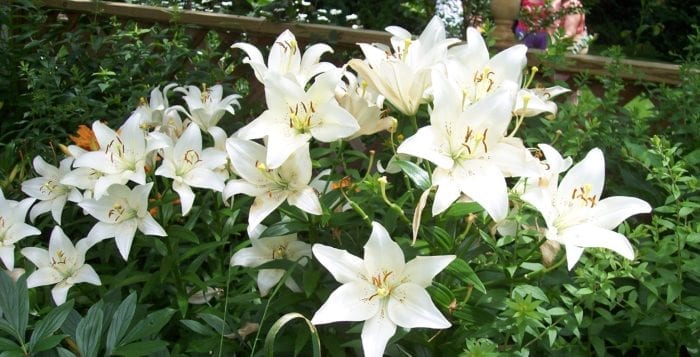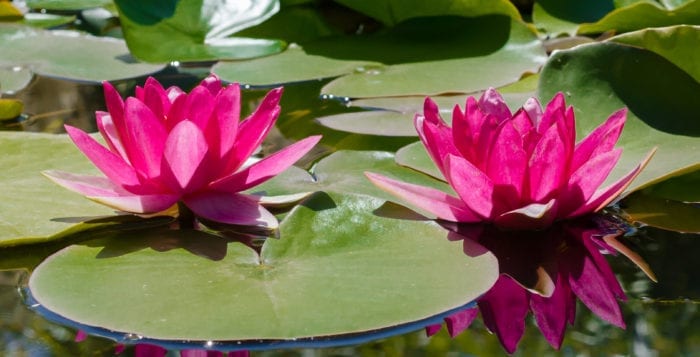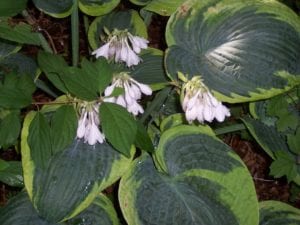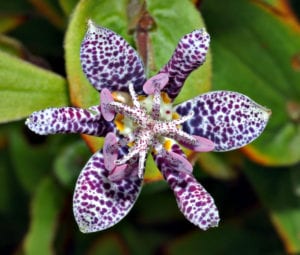By Ellen Barcel
This is the second article in a three-part series.
Last week we looked at a number of plants that have the word “lily” in their names but aren’t true lilies. Now, let’s take a look at true lilies.
What botanically is a lily? According to the North American Lily Society (www.lilies.org), “The bulb is the most distinguishing characteristic. It is composed of fleshy scales without a protective outer coating. A true lily is never dormant … it must be considered and treated as a living perennial plant. … Lily flowers, though completely varied in size, shape and color, always have six tepals and six anthers.” The society also comments on the fact that lilies are very fragrant flowers and have leaves on the same stem as the flowers.
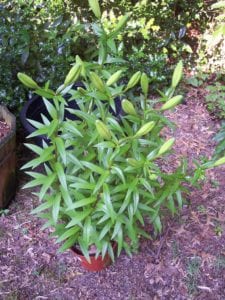
There are over 100 species in the genius Lilium. Check the variety you are considering because the cultural requirements are not necessarily the same across the board. In general, lily bulbs are planted in fall since they need a cold winter to thrive. Like daffodils, if they are planted in the deep south, they need to be refrigerated first before planting.
Lilies need a fair amount of sunshine to thrive and do best in a moist but well-drained soil. They do well in an acidic soil, down as low as a pH of 5.5 but do tolerate a higher pH. Remove spent flowers but take no more than one-third of the stem since it’s filled with the leaves, which are helping the plant grow.
Always check the package tag, but in general, lilies need to be planted deeply as they grow very tall. Since once planted, lilies will return year after year, you need to periodically apply fertilizer. I prefer natural fertilizers like compost, compost tea or fish emulsion, but the choice is yours. With Long Island’s generally sandy soil, make sure you add compost when planting them.
• Easter lily (Lilium longiflorum) is a scented native of the Ryukyu Islands. The white Easter lily is sold throughout the United States, usually for the holiday. Easter lilies are hardy in zones 7 to 9. As a result, you may find that your holiday plant will not survive in your garden if there is an unusually cold winter or if you have not heavily mulched the bed where they are growing over winter. Be careful with Easter lilies as they are toxic to cats.
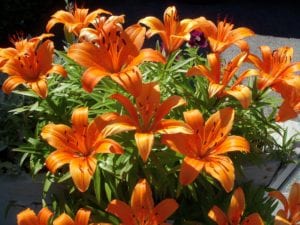
• Tiger lily (L. lancefolium also known as L. tigrinum) is one of several lilies known collectively as tiger lilies and are natives of Asia, known for their showy orange flowers. Bulblets can form along the stem at the leaf axis and can be used to propagate these plants.
• Asiatic lilies (L. asiatica) tend to bloom earlier than Oriental lilies. They come in many colors and sizes ranging from just about a foot tall to about six feet tall.
• Oriental lilies (L. oriental) bloom in mid to late summer and can grow quite tall, some almost eight feet tall. Flowers tend to be white, pink, red or bicolored.
• Dwarf Oriental lilies are as their name implies quite small, some that can easily be grown in containers. They are hardy in zones 5 through 9, so yes, you can comfortably grow them on Long Island.
Next week we’ll take a look at daylilies.
Ellen Barcel is a freelance writer and master gardener. To reach Cornell Cooperative Extension and its Master Gardener program, call 631-727-7850.

